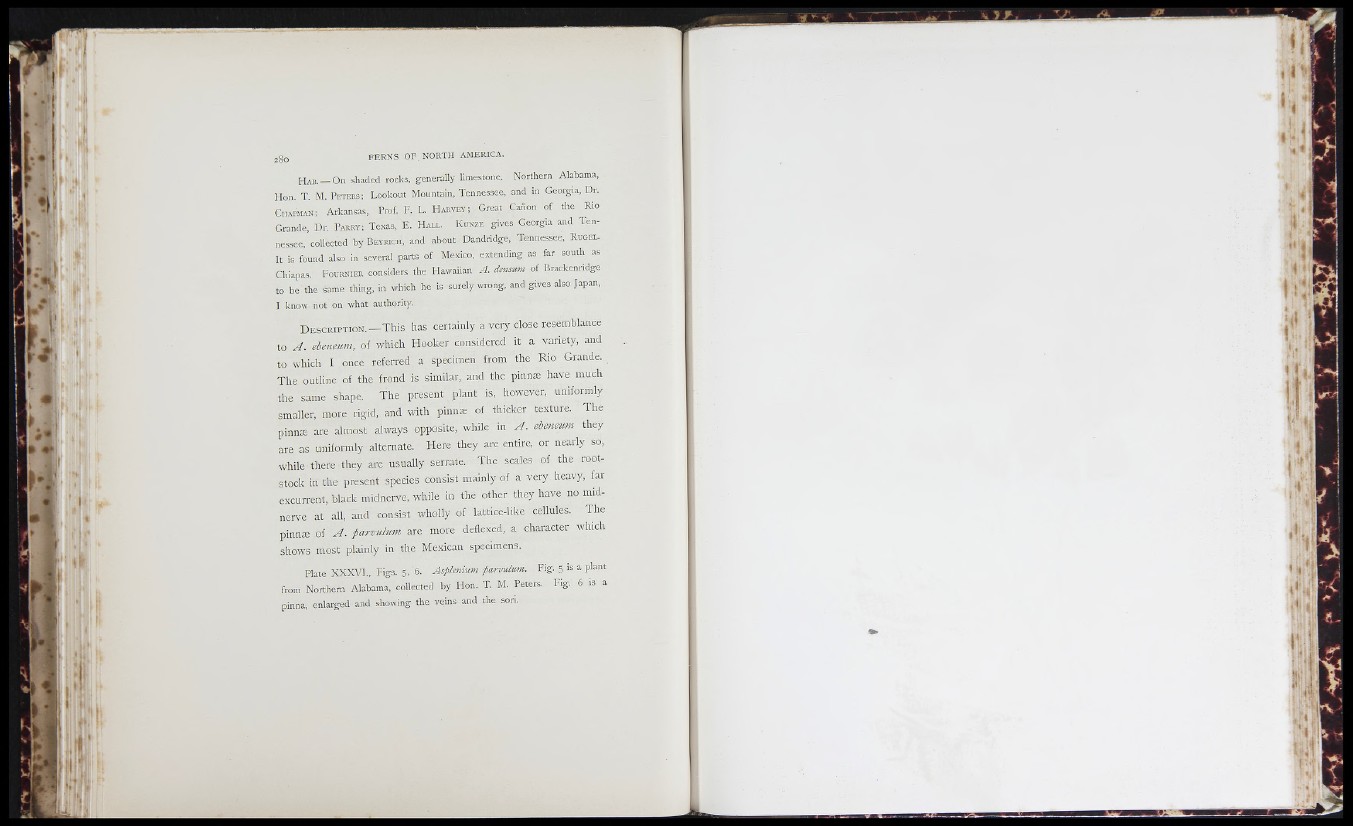
E
ItM
\ *’ -< I I %
Fr *
rI» ^ '
( L
h -
H a b .— On shaded rocks, generally limestone. Northern Alabama,
Hon. T. M. P e t e r s ; Lookout Mountain, Tennessee, and m Georgia, Dr.
C h a p m a n ; Arkansas, Prof. F. L. H a r v e y ; Great Cañón of the Rio
Grande, Dr. P a r r y ; Texas, E . H a l e . K u n z e gives Georgia and Tennessee,
collected by B e y r ic h , and about Daudridge, Tennessee, R u g e l .
It is found also in several parts of Mexico, extending as far south as
Chiapas. F o u r n i e r considers the Hawaiian A . densum of Brackenridge
to be the same thing, in which he is surely wrong, and gives also Japan,
I know not on what authority.
D e s c r i p t i o n . — This has certainly a very dose resemblance
to A . ebcmum, of which Hooker considered it a variety, and
to which I once referred a specimen from the Rio Grande.
The outline of the frond is similar, and the pinnæ have much
the same shape. The present plant is. however, uniformly
smaller, more rigid, and with pinnæ of thicker texture. The
pinnæ are almost always opposite, while in A . ebeneum they
are as uniformly alternate. Here they are entire, or nearly so,
while there they are usually serrate. The scales of the root-
stock in the present species consist mainly of a very heavy, far
excnrrent, black midnerve, while in the other they have no midnerve
at all, and consist wholly of lattice-like cellules. The
pinnæ of A . p am d um are more deflexed, a character which
shows most plainly in the Mexican specimens.
Plate X X X V I., Figs. 5, 6. Asplenium parvuhtm. Fig. 5 is a plant
from Northern Alabama collected by Hon. T. M. Peters. Fig. 6 is a
pinna, enlarged and showing the veins and the sori.
l l
I ' ,